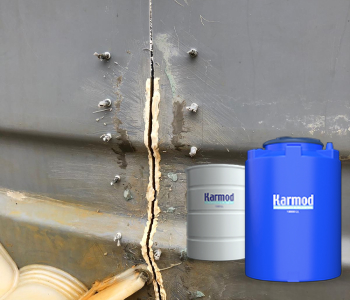Damage to tanks can usually occur due to environmental factors. For example, changes in water levels due to earthquakes, floods, natural disasters, or climate change can cause damage to water tank models. Additionally, pollutants or chemicals that form on the inner surfaces of storage areas can cause damage to the storage areas over time. Factors such as wear and tear, misuse, improper maintenance, inadequate water level control, incorrect material selection, and incorrect placement planning during use of tanks can also cause damage to tanks. The most common problems or damages that can occur in tanks include

1-) Water leakage
Occurs due to a hole, deficiency, or crack in the storage area. Stains that form on the inner surface of the storage area are generally caused by microorganisms or chemicals. Water leaks can occur due to physical damage to storage areas. For example, cracks, deficiencies, or holes in the walls or floor of the storage area can cause water leakage. In addition, errors made during the construction of storage areas or the inadequacy of materials used can also cause water leakage.
2-) Contamination
Contamination that forms on the inner surface of the storage area or in the water is generally caused by environmental factors. Tanks can become contaminated due to environmental factors, settlements, microorganisms and chemicals originating from the inner surfaces of tanks. For example, agricultural or industrial activities in areas surrounding the storage area can cause chemicals or waste to leak into the storage area. In addition, microorganisms that form on the inner surface of the storage area can degrade water quality and cause staining.
To clean tanks, first, contamination or stains that form on the inner surface of the storage area should be removed. This process can be carried out by physically cleaning or chemically cleaning the storage area. For example, stains that form on the inner surface of the storage area can be physically cleaned using a brush or broom. Specifically formulated cleaners can be applied to the inner surface of the storage area for chemical cleaning. Finally, chemical or biological methods can be used to improve water quality inside the storage area. For example, chemicals such as chlorine or ozone can be used to kill microorganisms inside the storage area. Bacteria or algae can be used to kill microorganisms inside the storage area using biological methods.
3-) Deterioration of Content Quality
Pollution or chemical imbalances that may occur in the stored water can cause deterioration of the quality of the content. To diagnose these problems, the storage area needs to be physically examined and water analyses need to be performed. These analyses can microscopically examine the stains or pollution on the inner surface of the storage area and perform water analysis to assess water quality. In addition, water levels or flow can be measured to detect water leakage, or special chemical analyses can be performed to detect pollution in the inner surface or water of the storage area.
The quality of the stored content can deteriorate depending on many factors because many product storages can be stored in these tanks. Especially plastic water tank models are quite functional. For this reason, many storages can be made for organic and chemical storage. The balance of the chemicals inside the storage area may be disrupted. Pollution resulting from leakage of waste into the storage area, for example, can cause disruption of the chemical balance inside the storage area. The number of microorganisms inside the storage area may increase or decrease. This situation occurs because of the growth or death of microorganisms inside the storage area.
The number of size of particles inside the storage area may increase or decrease. This occurs as a result of the growth or death of particles inside the storage area. The temperature of the stored products may change. Temperature changes can affect the growth or death of microorganisms inside the stored products. The water level inside the stored products may change. Changes in water level can affect the growth or death of microorganisms inside the storage area. Physical damage that occurs on the inner surface of the storage area can affect the growth or death of microorganisms inside the storage area and deteriorate water quality. Based on these criteria, water quality inside the storage area should be monitored, and necessary measures should be taken.


 EN
EN
 DE
DE
 FR
FR
 IT
IT
 ES
ES
 PT
PT
 RU
RU
 AR
AR
 BG
BG
 SR
SR
 GR
GR
 SQ
SQ
 RO
RO
 PL
PL
 HU
HU
 CZ
CZ
 HR
HR
 AZ
AZ
 GE
GE
 AM
AM
 IL
IL